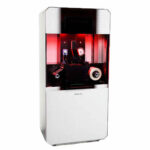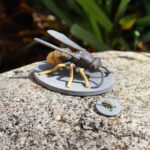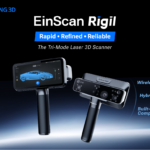Researchers at Brigham Young University have just achieved a marvel in the field of microfluidics. They managed to print a fluidics lab on a scale never before achieved. The purpose of microfluidics is to create devices that can operate on blood cells or thin strands. Thus, microfluidics requires a very high resolution printing process to create the tiny channels within each lab.
For the purposes of this project, the research team developed an entirely new printer. This enabled them to print on the micro scale. The next step was actually making a resin that fit the goals of the experiment. The researchers developed a low cost DLP resin that could cure in response to UV LEDs. While most printers failed to achieve a print smaller than 100 micrometers, this new chip is 18 by 20 micrometers. This stunningly high resolution allows the team make items smaller than the average fingernail with channels that rival the size of capillaries.
Applications of Microfluidics
The applications of these sorts of microfluidic products are mostly medical. The team’s research focuses on using lab-on-a-chip devices to detect biomarkers related to preterm birth. It can also be used as a portable means of detecting blood diseases. While traditional methods require a lot of control factors, BYU’s system doesn’t even require a clean room. This saves time and is more convenient.
It is also a means of rapid production. Their new technique allows them to produce a whole device in just 30 minutes. This is impressive considering just how minuscule each channel within the chip can be. As a result of this new level of detail, the team have said that researchers can achieve new levels of functionality for their 3D printed microfluidics.
Printing Microfluidics
Microfluidics and 3D printing are a natural fit. While producing a microfluidics labs have been a goal for a long time, this one could only be made possible with the precision allowed by 3D printing. Microfluidics has also become a niche within the 3D printing industry.
While the system used by BYU used resins and DLP, there are other methods of printing as well. The video below showcases the Fluidic Factory 3D printer:
https://youtu.be/4dCJgndaPS8
The Fluidic Factory printer uses a pressure based droplet system. BYU’s printer can achieve a higher resolution than it because of its basis in DLP. Traditional extruders can’t match that quite yet.
Microfluidics is still an emerging field. By necessity, it will have to keep pushing the boundaries of smaller and smaller resolution sizes. It can also serve as the main push for nano-machines and such other technologies that require delicate micro scale arrangements. As of now, it is still relatively new.













